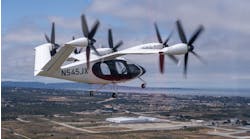The creation of an innovation culture that rescued the Boeing Co.'s C-17 Globemaster program from the brink of cancellation in the early 1990s would not have been possible without "courageous leadership," former C-17 program manager David Bowman notes in the foreword to "The Rudolph Factor: Finding the Bright Lights that Drive Innovation in Your Business." However, the book's co-authors, Cyndi Laurin and Craig Morningstar, take Bowman's statement one step further, asserting that it was Boeing's progressive view of leadership that allowed innovation to flourish.
"Within the Boeing C-17 program, it is widely recognized that the story begins and ends with leadership," Laurin and Morningstar write. "We are not saying it begins and ends with the positional leaders or management -- but with a new definition of leadership."
Perhaps the epitome of the C-17 program's progressive leadership philosophy is Bowman, who defines leadership as "connecting people to their future." Bowman, now vice president and general manager, Global Mobility Systems, Boeing Defense, Space and Security, describes his definition as a "servanthood model" of leadership.
"If you're doing it to become CEO, for your own career or for any other reason other than the people that surround you -- and this includes family, community and everyone else -- then I would argue that you're doing something, but it's not leadership," Bowman tells IndustryWeek. "Or it's certainly not effective leadership."
In Boeing's scramble to turn around a program that was plagued by late deliveries, cost overruns, quality problems and a toxic culture, Bowman and other C-17 executives concluded that traditional leadership roles must change. As detailed in "The Rudolph Factor," Boeing found that engaging the workforce in innovation requires positional leaders and managers to abandon the command-and-control style of management that is so prevalent in business today. Instead, leaders must employ a more participative approach and solicit collective ideas from the workforce rather than imposing initiatives on them.
"They said, 'Here's what we're going to do. We need to listen to you. We need to find your creative ideas. And middle managers, if you don't fit and buy into this -- you don't fit,'" Morningstar explains in an interview with IndustryWeek. " That epic event just changed everything inside the Boeing C-17 culture."
The results have been remarkable. In the span of a few years, the C-17 program "became the model acquisition program for the U.S. Air Force," earning the Malcolm Baldridge National Quality Award in 1998, the authors note. Several formal mechanisms for capturing and rewarding ideas for innovation have helped the C-17 program save more than $90 million over the past decade (a conservative estimate, according to the authors). Laurin and Morningstar also point out that some of the best practices and lessons learned from the Boeing C-17 program's cultural transformation are being replicated in other areas of the company.
See Also




